
The Better Angels of Our Nature: Why Violence Has Declined
by
Steven Pinker
Published 24 Sep 2012
Calling nuclear powers’ bluff: Ray, 1989, p. 430; Huth & Russett, 1984; Kugler, 1984; Gochman & Maoz, 1984, pp. 613–15. 197. Nuclear taboo: Schelling, 2000, 2005; Tannenwald, 2005b. 198. Neutron bomb compatible with just war: Tannenwald, 2005b, p. 31. 199. Not quite a taboo: Paul, 2009; Tannenwald, 2005b. 200. Daisy ad: “Daisy: The Complete History of an Infamous and Iconic Ad,” http://www.conelrad.com/daisy/index.php. 201. Mark of Cain: Quoted in Tannenwald, 2005b, p. 30. 202. Sanctification of Hiroshima: Quoted in Schelling, 2005, p. 373. 203. Gradual emergence of nuclear taboo: Schelling, 2005; Tannenwald, 2005b. Dulles quote from Schelling, 2000, p. 1. 204.
…
The Argentinian junta ordered the invasion of the Falkland Islands in full confidence that Britain would not retaliate by reducing Buenos Aires to a radioactive crater. Nor could Israel have credibly threatened the amassed Egyptian armies in 1967 or 1973, to say nothing of Cairo. Schelling, and the political scientist Nina Tannenwald, have each written of “a nuclear taboo”—a shared perception that nuclear weapons fall into a uniquely dreadful category.197 The use of a single tactical nuclear weapon, even one comparable in damage to conventional weaponry, would be seen as a breach in history, a passage into a new world with unimaginable consequences. The obloquy has attached itself to every form of nuclear detonation.
…
Dean Rusk, secretary of state in the Kennedy and Johnson administrations, wrote that if the country had used a nuclear weapon, “we would have worn the mark of Cain for generations to come.”201 The physicist Alvin Weinberg, whose research helped make the bomb possible, asked in 1985: Are we witnessing a gradual sanctification of Hiroshima—that is, the elevation of Hiroshima to the status of a profoundly mystical event, an event ultimately of the same religious force as biblical events? I cannot prove it, but I am convinced that the 40th Anniversary of Hiroshima, with its vast outpouring of concern, bears resemblance to the observance of major religious holidays.... This sanctification of Hiroshima is one of the most hopeful developments of the nuclear era.202 The nuclear taboo emerged only gradually. As we saw in chapter 1, for at least a decade after Hiroshima many Americans thought the A-bomb was adorable. By 1953 John Foster Dulles, secretary of state in the Eisenhower administration, was deploring what he called the “false distinction” and “taboo” surrounding nuclear weapons.203 During a 1955 crisis involving Taiwan and the People’s Republic of China, Eisenhower said, “In any combat where these things can be used on strictly military targets and for strictly military purposes, I see no reason why they shouldn’t be used just exactly as you would use a bullet or anything else.”204 But in the following decade nuclear weapons acquired a stigma that would put such statements beyond the pale.
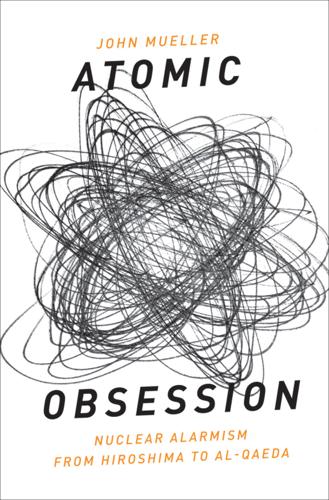
Atomic Obsession: Nuclear Alarmism From Hiroshima to Al-Qaeda
by
John Mueller
Published 1 Nov 2009
Moreover, as discussed at the end of chapter 1, there seems to be a considerable distaste within the military for the battlefield messiness involved—all that radiation to worry about in particular—something that also affected military thinking about the use of chemical weapons.20 As a result, insofar as their battlefield use has been contemplated, nuclear weapons have been held back as weapons of last resort—not so much as the “absolute” weapon but rather as the “ultimate” weapon, something one analyst labels their “all-or-nothing” character. It is commonly contended that Israel, in particular, envisions using them only when it is under a massive attack that credibly threatens its existence.21 The nuclear taboo/convention/norm/tradition has probably helped nuclear countries come to that conclusion, but it does not seem to have been necessary for them to do so. NUCLEAR METAPHYSICS: THE SEDUCTIVE LOGIC OF DETERRENCE The mesmerizing existence of nuclear weapons spawned a truly massive theoretical literature—Robert Johnson has labeled it “nuclear metaphysics”—over their consequences and over how they might or might not be deployed.
…
It is extremely important, then, to understand “the scientific, academic, industrial, and economic base a country needs in order to develop and actually produce weapons.”27 MORALITY AND CONCERNS ABOUT PRECEDENTS For many countries and peoples, there is a degree of moral repugnance to the possession of nuclear weapons: they take the nuclear taboo, discussed in chapter 2, seriously. For example, some Canadians, after careful, objective analysis, have concluded that their country is morally superior to their gigantic neighbor to the south, a view that was once caricatured by a Canadian political scientist: “Having studied thousands of Canadian editorials, and listened to as many speeches and conversations, I have come to the conclusion that the fault with North America is an improper division of resources: the Americans got the power; the Canadians the virtue and common sense.”
…
“The Truth About Iraq’s Dying Babies.” Guardian Weekly 15 March: 7. Takeyh, Ray. 2001. “The Rogue Who Came in from the Cold.” Foreign Affairs 80(3) May/June: 62–72. Taleb, Nassim Nicholas. 2007. The Black Swan: The Impact of the Highly Improbable. New York: Random House. Tannenwald, Nina. 2007. The Nuclear Taboo: The United States and the Non-Use of Nuclear Weapons Since 1945. New York: Cambridge University Press. Taubman, William. 1982. Stalin’s American Policy. New York: Norton. Tenet, George, and Bill Harlow. 2007. At the Center of the Storm: My Years at the CIA. New York: HarperCollins. Tetlock, Philip E. 2005.
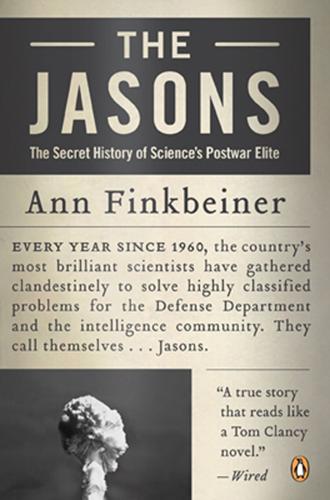
The Jasons: The Secret History of Science's Postwar Elite
by
Ann Finkbeiner
Published 26 Mar 2007
Wheeler (Chairman of the Joint Chiefs of Staff ) to Lyndon Johnson, memorandum, February 3, 1968, note 5; online at http://www.state. gov/r/pa/ho/frus/johnsonlb/vi/13690.htm and http://www.mtholyoke. edu/acad/intrel/vietnam.htm. No nuclear weapons were currently…presumably nearby: Tannenwald, Nuclear Taboo; “Nuclear Weapons and the Vietnam War,” online at http://www.nautilus.org/VietnamFOIA/background/NuclearWeapons.html. On Monday, February 5…indeed was the case: John Finney, “Anonymous Call Set off Rumors of Nuclear Arms for VN,” New York Times, February 12, 1968, 1–2; Michael Klare, “The Secret Thinkers,” Nation, April 15, 1968, 503–504.
…
Chicago: University of Chicago Press, 1965. Smith, Alice Kimball, and Charles Weiner. “Robert Oppenheimer: The Los Alamos Jeans.” Bulletin of the Atomic Scientists, June 1980. Smith, Bruce L. R. The Advisers: Scientists in the Policy Process, Washington, D.C.: Brookings Institution, 1992. Tannenwald, Nina. The Nuclear Taboo: The United States and the Nonuse of Nuclear Weapons Since 1945. New York: Cambridge University Press, 2005. Townes, Charles H. How the Laser Happened: Adventures of a Scientist. New York: Oxford University Press, 1999. ———. Interview by Suzanne Reiss, 1991, 1992. Regional Oral History Office, University of California, Berkeley.

Enlightenment Now: The Case for Reason, Science, Humanism, and Progress
by
Steven Pinker
Published 13 Feb 2018
(In a backhanded acknowledgment that treaties matter, India, Pakistan, and Israel never signed it, and North Korea withdrew.) The world’s citizens are squarely behind the movement: large majorities in almost every surveyed country favor abolition.110 Zero is an attractive number because it expands the nuclear taboo from using the weapons to possessing them. It also removes any incentive for a nation to obtain nuclear weapons to protect itself against an enemy’s nuclear weapons. But getting to zero will not be easy, even with a carefully phased sequence of negotiation, reduction, and verification.111 Some strategists warn that we shouldn’t even try to get to zero, because in a crisis the former nuclear powers might rush to rearm, and the first past the post might launch a pre-emptive strike out of fear that its enemy would do so first.112 According to this argument, the world would be better off if the nuclear grandfathers kept a few around as a deterrent.
…
Nuclear weapon states could all agree to No First Use in a treaty; they could get there by GRIT (with incremental commitments like never attacking civilian targets, never attacking a non-nuclear state, and never attacking a target that could be destroyed by conventional means); or they could simply adopt it unilaterally, which is in their own interests.126 The nuclear taboo has already reduced the deterrent value of a Maybe First Use policy, and the declarant could still protect itself with conventional forces and with a second-strike capability: nuclear tit for tat. No First Use seems like a no-brainer, and Barack Obama came close to adopting it in 2016, but was talked out of it at the last minute by his advisors.127 The timing wasn’t right, they said; it might signal weakness to a newly obstreperous Russia, China, and North Korea, and it might scare nervous allies who now depend on the American “nuclear umbrella” into seeking nuclear weapons of their own, particularly with Donald Trump threatening to cut back on American support of its coalition partners.
…
The USSR, not Hiroshima, made Japan surrender: Berry et al. 2010; Hasegawa 2006; Mueller 2010a; Wilson 2007. 102. Nobel to the nukes: Suggested by Elspeth Rostow, quoted in Pinker 2011, p. 268. Nuclear weapons are poor deterrents: Pinker 2011, p. 269; Berry et al. 2010; Mueller 2010a; Ray 1989. 103. Nuclear taboo: Mueller 1989; Sechser & Fuhrmann 2017; Tannenwald 2005; Ray 1989, pp. 429–31; Pinker 2011, chap. 5, “Is the Long Peace a Nuclear Peace?” pp. 268–78. 104. Effectiveness of conventional deterrence: Mueller 1989, 2010a. 105. Nuclear states and armed burglars: Schelling 1960. 106. Berry et al. 2010, pp. 7–8. 107.

The Fourth Industrial Revolution
by
Klaus Schwab
Published 11 Jan 2016
Even more importantly, can we engender cooperation between the public and private sectors on the global scale to mitigate these threats? Over the second half of the last century, the fear of nuclear warfare gradually gave way to the relative stability of mutually assured destruction (MAD), and a nuclear taboo seems to have emerged. If the logic of MAD has worked so far it is because only a limited number of entities possessed the power to destroy each other completely and they balanced each other out. A proliferation of potentially lethal actors, however, could undermine this equilibrium, which was why nuclear states agreed to cooperate to keep the nuclear club small, negotiating the Treaty on the Non-Proliferation of Nuclear Weapons (NPT) in the late 1960s.
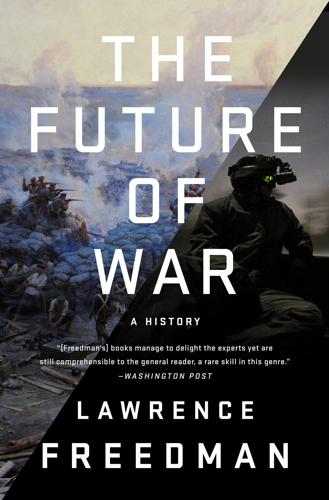
The Future of War
by
Lawrence Freedman
Published 9 Oct 2017
Ferguson, Charles and Michelle Smith, ‘Assessing Radiological Weapons: Attack Methods and Estimated Effects’. Defence Against Terrorism Review, 2:2 (2009), 15–34. Fink, Carole. ‘The search for peace in the interwar period’. The Cambridge History of War. Vol. IV. Eds. Chickering et al. 285–309. Fitzpatrick, Mark. The World After: Proliferation, Deterrence and Disarmament if the Nuclear Taboo is Broken. Paris: IFRI, 2009. ‘Flight of the Drones: Why the Future of Air Power Belongs to Unmanned Systems’. The Economist, 8 Oct. 2011. Foley, Robert. German Strategy and the Path to Verdun: Erich von Falkenhayn and the Development of Attrition, 1870–1916. Cambridge: Cambridge University Press, 2005.
…
President Putin’s September 2014 comment is noted in Tom Parfitt, ‘Ukraine crisis: Putin’s nuclear threats are a struggle for pride and status’, The Telegraph, 26 Sept. 2014. Available: http://www.telegraph.co.uk/news/worldnews/europe/russia/11064978/Ukraine-crisis-Putins-nuclear-threats-are-a-struggle-for-pride-and-status.html. 11. Mark Fitzpatrick, The World After: Proliferation, Deterrence and Disarmament if the Nuclear Taboo is Broken (Paris: IFRI, 2009). 12. Philip Bobbitt, Terror and Consent: The Wars for the Twenty-first Century, (London: Allen Lane, 2008). 13. Max Boot, War Made New: Technology, Warfare, and the Course of History, 1500 to Today (New York: Gotham, 2006), and Rosa Brooks, How Everything Became War and the Military Became Everything: Tales from the Pentagon (New York: Simon & Schuster, 2016). 14.
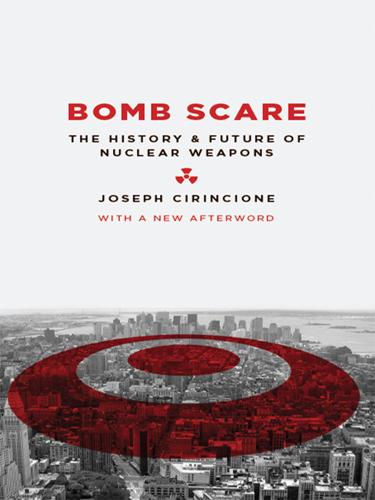
Bomb Scare
by
Joseph Cirincione
Published 24 Dec 2011
See Joseph Cirincione, “The Declining Ballistic Missile Threat,” Policy Outlook, Carnegie Endowment for International Peace, February 2005, available at http://www.carnegieendowment.org/pdf/The_Declining_Ballistic_Missile_Threat_2005.pdf. 4. See Joseph Cirincione, Jon B. Wolfsthal, Miriam Rajkumar, Deadly Arsenals: Nuclear, Biological and Chemical Threats (Washington, D.C.: Carnegie Endowment for International Peace, 2005), pp. 57–82. 5. Ibid. 6. Nina Tannenwald, “The Nuclear Taboo and the Nuclear Nonproliferation Regime,” Remarks at Carnegie International Non-Proliferation Conference, Washington, D.C. November 7, 2005, available at http://www.carnegieendowment.org/static/npp/2005conference/presentations/tannenwald_remarks.pdf. 7. David Hobson, “U.S. Nuclear Security in the 21st Century,” Arms Control Association Luncheon Address, Washington, D.C., February 2005, available at http://www.armscontrol.org/events/20050203_transcript_hobson.asp. 8.
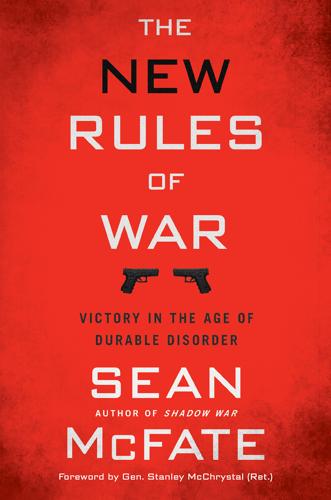
The New Rules of War: Victory in the Age of Durable Disorder
by
Sean McFate
Published 22 Jan 2019
The most effective weapons will not fire bullets, and nonkinetic elements like information, refugees, ideology, and time will be weaponized. Big militaries and supertechnology will prove inept. Nuclear weapons will be seen as big bombs, and limited nuclear war will become acceptable to some. Why do we assume the nuclear taboo will last forever? Others are already fighting in this new environment and winning. Russia, China, Iran, terrorist organizations, and drug cartels exploit durable disorder for victory, hastened by the West’s strategic atrophy. These foes have significantly fewer resources than the West but are more effective in warfare.

I, Warbot: The Dawn of Artificially Intelligent Conflict
by
Kenneth Payne
Published 16 Jun 2021
The prospect of nuclear annihilation has acted as a sobering brake on gambling.24 At the brink, in October 1962, that’s exactly what Khrushchev and Kennedy chose to do. The awful prospect of nuclear war chilled the deliberations of the antagonists. Indeed, a minimax preference has reinforced the nuclear taboo over the decades since Hiroshima. And perhaps we shouldn’t be too surprised—humans are, broadly, loss averse, and nuclear bombs amount to a catastrophic loss. We can learn much from the big international crises of the Cold War years like Cuba; not least that coercion to compel and deter enemies is an uncertain affair.
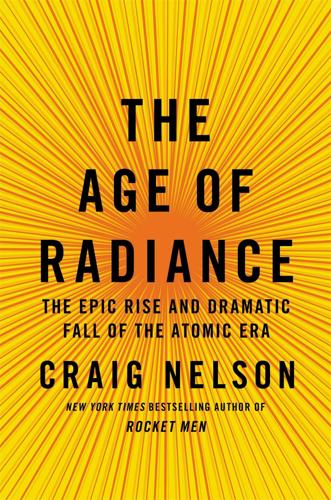
The Age of Radiance: The Epic Rise and Dramatic Fall of the Atomic Era
by
Craig Nelson
Published 25 Mar 2014
New York Times, March 14, 2011. Tabuchi, Hiroko, and Matthew L. Wald. “Japan Scrambles to Avert Meltdowns at Two Crippled Nuclear Reactors.” New York Times, March 13, 2011. Tanikawa, Miki. “Japan Gets Electricity Wake-Up Call.” New York Times, October 26, 2011. Tannenwald, Nina. “Stigmatizing the Bomb: Origins of the Nuclear Taboo.” International Security 29, no. 4 (Spring 2005). Taubman, Philip. “No Need for All These Nukes.” New York Times, January 7, 2012. Teller, Edward. Memoirs. New York: Perseus, 2001. Teller, Edward, and Allan Brown. The Legacy of Hiroshima. New York: Doubleday, 1962. Thomson, Sir William (Lord Kelvin).

On the Edge: The Art of Risking Everything
by
Nate Silver
Published 12 Aug 2024
That isn’t a consensus view; McMaster, for one, thought that Putin was highly unlikely to use nuclear weapons because of the possibility that fallout from a nuclear detonation in Ukraine could blow radioactive contamination eastward into Russia. But the memories of Hiroshima are fading, and the nuclear taboo may be weakening. There’s also another pessimistic fact to consider: there have been some frighteningly close calls. John F. Kennedy estimated after the Cuban Missile Crisis that there had been somewhere between a 1-in-3 and a 1-in-2 chance that the conflict would go nuclear. And in September 1983, the only thing preventing a Russian nuclear launch may have been the canny judgment of Soviet lieutenant colonel Stanislav Petrov, who correctly inferred that a report of a U.S.

Command and Control: Nuclear Weapons, the Damascus Accident, and the Illusion ofSafety
by
Eric Schlosser
Published 16 Sep 2013
.: History Staff, Center for the Study of Intelligence, Central Intelligence Agency, 1996. Stumpf, David K. Titan II: History of a Cold War Missile Program. Fayetteville, AR: University of Arkansas Press, 2000. Sutton, George P., and Oscar Biblarz. Rocket Propulsion Elements: Seventh Edition. New York: John Wiley & Sons, 2001. Tannenwald, Nina. The Nuclear Taboo: The United States and the Non-Use of Nuclear Weapons Since 1945. New York: Cambridge University Press, 2007. Taubman, Philip. The Partnership: Five Cold Warriors and Their Quest to Ban the Bomb. New York: HarperCollins, 2012. Taylor, Maxwell D. The Uncertain Trumpet. New York: Harper & Brothers, 1960.